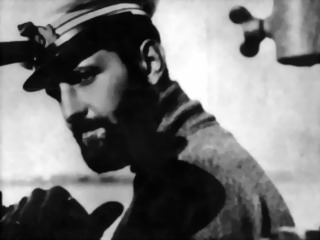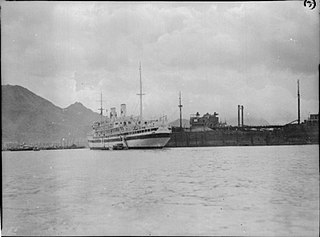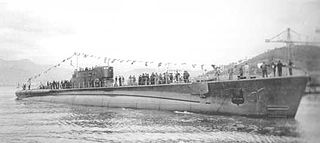Construction and career
Leonardo da Vinci was laid down at Fincantieri Monfalcone Shipyard on 1 July 1976 and launched on 20 October 1979. She was commissioned on 6 November 1982.
She has participated in important national and international exercises and in 1989, on the occasion of the international exercise Tapon, she was the first post-war Italian-built submarine to cross the Strait of Gibraltar in submersion, under air and naval conflict under the command of the lieutenant captain Luigi de Benedictis, almost half a century after the glorious ancestor of the Regia Marina, a unit that under the command of the Gianfranco Gazzana-Priaroggia had the primacy of the greatest tonnage of enemy ships sunk during the Second World War.
Entered into reserve fleet (RTD) on 31 December 2007.
She was decommissioned on 30 June 2010. She is currently moored at Quay Sauro Calata San Vito, pier 2, north side in the La Spezia Naval Base. [1] Leonardo da Vinci was sold for scrap 2023.

USS Dace (SS-247), a Gato-class submarine, was the first submarine of the United States Navy to be named for any of several small North American fresh-water fishes of the carp family.

Leonardo da Vinci was the last of three Conte di Cavour-class dreadnoughts built for the Regia Marina in the early 1910s. Completed just before the beginning of World War I, the ship saw no action and was sunk by a magazine explosion in 1916 with the loss of 248 officers and enlisted men. The Italians blamed Austro-Hungarian saboteurs for her loss, but it may have been accidental. Leonardo da Vinci was refloated in 1919 and plans were made to repair her. Budgetary constraints did not permit this, and her hulk was sold for scrap in 1923.

Naval warfare in the Mediterranean during World War I took place between the naval forces of the Entente and the Central Powers in the Mediterranean Sea between 1914 and 1918.

The Nazario Sauro class are diesel-electric submarines operated by the Italian Navy. All boats were built by Fincantieri in Monfalcone.

The Marconi class was a class of six submarines built for the Royal Italian Navy. The submarines were all launched between 1939 and 1940, and all but one, Luigi Torelli, were lost in the Atlantic during the Second World War.

Museo Nazionale Scienza e Tecnologia Leonardo da Vinci in Milan, dedicated to painter and scientist Leonardo da Vinci, is the largest science and technology museum in Italy. It was opened on 15 February 1953 and inaugurated by Prime Minister Alcide De Gasperi.

SS Leonardo da Vinci was an ocean liner built in 1960 by Ansaldo Shipyards, Italy for the Italian Line as a replacement for their SS Andrea Doria that had been lost in 1956. She was initially used in transatlantic service alongside SS Cristoforo Colombo, and primarily for cruising after the delivery of the new SS Michelangelo and SS Raffaello in 1965. In 1976 the Leonardo da Vinci became the last Italian Line passenger liner to be used in service across the North Atlantic. Between 1977 and 1978 she was used as a cruise ship by Italia Crociere but was laid up from 1978 onwards until 1982 when she was scrapped.

Gianfranco Gazzana Priaroggia was an officer in the Italian Royal Navy, and was the highest-scoring Italian submarine captain of World War II.

BETASOM was a submarine base established at Bordeaux, France by the Regia Marina during the Second World War. From this base, Italian submarines participated in the Battle of the Atlantic from 1940 to 1943 as part of the Axis anti-shipping campaign against the Allies.

RFA Maine was a 7,432 GRT hospital ship which was built in 1924 as the ocean liner Leonardo da Vinci by SA Ansaldo, La Spezia, Italy for the Società di Navigazione Transatlantica Italiana. In 1941, she was captured by the British at Kismayu, Italian Somaliland. Declared a prize of war, she was passed to the Ministry of War Transport (MoWT) and renamed Empire Clyde, serving as a hospital ship for the British Army during the Second World War. In 1948, ownership was passed to the Admiralty and she entered service with the Royal Fleet Auxiliary as RFA Maine. She served during the Korean War and was scrapped in 1954.
The CA class were a group of midget submarines built for the Italian Navy during World War II.

Leonardo da Vinci was a Marconi-class submarine of the Italian navy during World War II. It operated in the Atlantic from September 1940 until its loss in May 1943, and became the top scoring non-German submarine of the entire war.
SS Lulworth Hill was a British cargo ship completed by William Hamilton & Co in Port Glasgow on the Firth of Clyde in 1940. Lulworth Hill had a single 520 NHP triple-expansion steam engine driving a single screw. She had eight corrugated furnaces heating two 225 lbf/in2 single-ended boilers with a combined heating surface of 7,643 square feet (710 m2), plus one auxiliary boiler.

Operation Neuland was the code name of the Kriegsmarine extension of unrestricted submarine warfare into the Caribbean Sea during World War II. U-boats demonstrated range to disrupt United Kingdom petroleum supplies and United States aluminum supplies which had not been anticipated by Allied pre-war planning. Although the area remained vulnerable to submarines for several months, U-boats never again enjoyed the opportunities for success resulting from the surprise of this operation.
Leonardo da Vinci (1452–1519) was an Italian Renaissance polymath.
Leonardo da Vinci this name has been borne by at least four ships of the Italian Navy and may refer to:

Enrico Tazzoli was one of three Calvi-class submarines built for the Regia Marina during the 1930s. Completed in 1936, she played a minor role in the Spanish Civil War of 1936–1939 supporting the Spanish Nationalists. She operated in the Atlantic during the Second World War and was second only to the submarine Leonardo da Vinci as the highest scoring Italian submarine of the conflict. Enrico Tazzoli was converted in 1943 to be a submarine transport for blockade-running between Europe and the Far East. She was lost on her first voyage in this role.

Cabedelo (Cabedello) was the fourth Brazilian merchant ship attacked by the Axis submarines during the Second World War and the third to be sunk after the rupture in diplomatic relations between Brazil and the Axis in January 1942.
This page is based on this
Wikipedia article Text is available under the
CC BY-SA 4.0 license; additional terms may apply.
Images, videos and audio are available under their respective licenses.

















